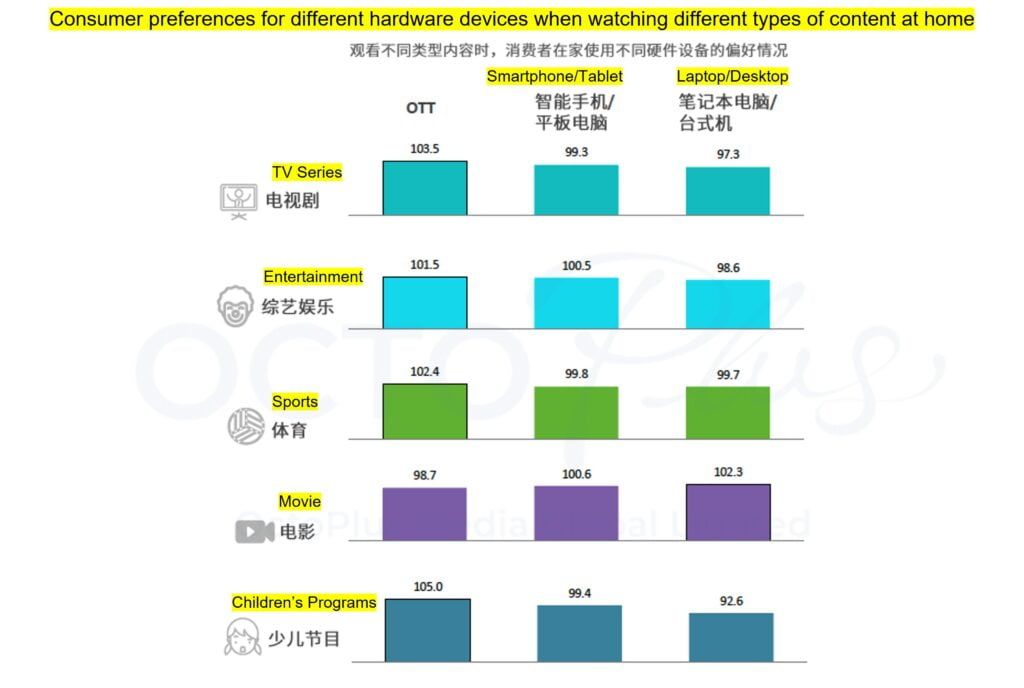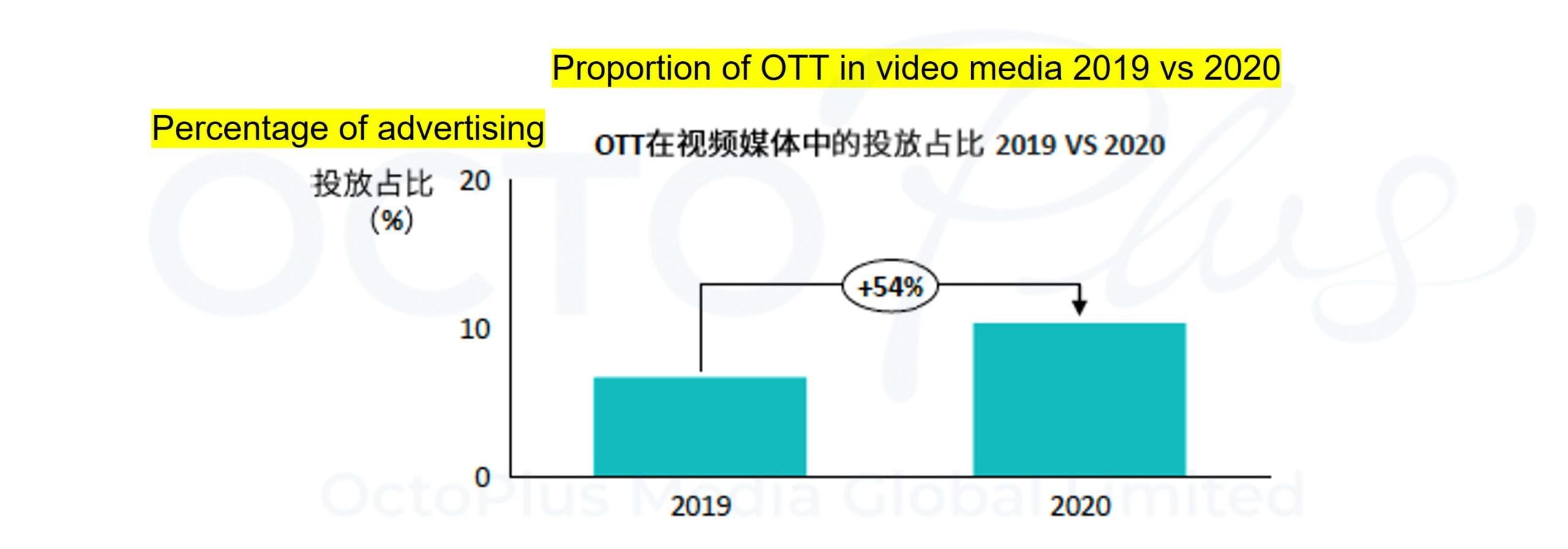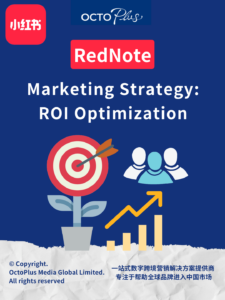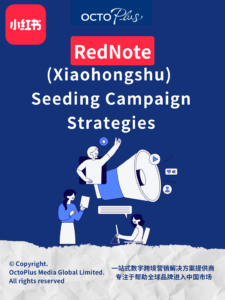China NEW TV Marketing, OTT Market Analysis Report 2022
【Posted on: 2022 March】
According to the “2021 Douyin Luxury Industry Report” released by Trend insight, China’s luxury goods consumption growth will lead the world in 2021, and major brands have deployed content fields one after another.
In 2021, OTT revenue will be 15 billion, which membership revenue will account for about 20% and advertising revenue will account for 80%. At the same time, according to the “2021 NEW TV Marketing Report” released by Miaozhen statistics, 25% of advertisers have increased their budgets for large-screen advertising in the past year, such as beauty and personal care brands, and the growth of OTT advertising in 2021 will reach 28.45%. Compared with the PC and mobile terminals, the advertising traffic of OTT smart TVs has continued to rise in recent years, and in 2021, it will become the only traffic growth screen among the three major screens.
According to Miaozhen data, 64% of consumers chose to watch the Winter Olympics through smart TVs during this period, far exceeding other viewing devices, and 58% of consumers even said that the whole family watched the Winter Olympics together. It seems like the smart large screen has firmly occupied the “C” position of the family scene.
Nowadays, OTT is no longer the “small but beautiful” platform of the past. Since last year, more and more first-line big brands including Chanel, Tiffany, Dior and so on have invested in OTT big-screen marketing. Except for the number of users and the boot rate, what are the charms of OTT, and what is the confidence of OTT to become such high value?
Let’s start with the irreplaceable value of OTT
The data shows that in 2021, OTT-side advertising has increased by 109% compared to 2018. In the digital advertising traffic pattern (PC, Mobile, and OTT), the share of OTT-side advertising traffic has gradually increased from 11% to 20%. Compared with 2019, the budget of advertisers in OTT video media in 2020 has increased by 54%.
Why is OTT advertising increasingly valued by advertisers?
As far as the hard power of this big screen is concerned, there are three reasons.

Miaozhen data pointed out that compared with PC and mobile terminals, the advertising traffic of OTT smart TVs has continued to rise in recent years, becoming the only traffic growth screen among the three major screens. The future of advertising has undoubtedly pointed to OTT as this new traffic depression.
Currently, OTT has covered more than 300 million households, and 120 million households turn on the TV every day. As the core entrance of the family scene, OTT reaches not only one person but a group of people. With the family scene as the core, it can reach a wider audience and achieve greater marketing volume. This one-to-many model is more conducive to brand marketing reaching a wider audience.
Multiple gameplays, customizable, further strengthen brand awareness and accumulate long-term assets. At present, whether it is a mature brand or a new consumer brand, it is an eternal and important issue to further penetrate the brand concept into the minds of consumers and strengthen brand awareness.
Compared with the small screen, the large screen can provide a more impactful and immersive experience, and the user’s emotional identity is stronger. The most obvious advantage of OTT is the visual effect of the “big screen” and the innovative interactive experience supported by a series of new technologies.
Data shows that OTT advertising ranks first in all media in terms of brand recognition and delivery trust, surpassing traditional TV and building district advertising.
Looking for strong exposure, multiple gameplay, and more accurate advertising through customization in the traffic depression is definitely a good way for advertisers to “control costs and increase efficiency”
Apart from it, why OTT, there are “three main elements” that advertisers choose.
Based on the current daily activity gap, even if OTT is the “last” fertile ground in the current traffic era if it is really compared about exposure, the OTT side is not the opponent of the PC and mobile terminals, which then must mention other advantages of the OTT channel.
“Content” differences are smoothened out
Platforms that could only be viewed through PCs or mobile phones in the past, under the current trend of convergence of mainstream media and OTT operators, OTT platforms are also readily available and have more advantages. Often a major system member can experience all the platform VIP services in the system.
In addition, as the “only exclusive” application method is broken, it is a win-win situation for both OTT operators and content platforms. Last year’s Bilibili financial report data showed that Bilibili’s MAU increased by 30.1 million to 267 million people, an increase of 36% year on year. This is mainly due to the expansion of categories and scenarios. Especially for the latter, TV users have surpassed PCs to become the second-largest user of Bilibili.
Under the integration of traditional Internet platforms and OTT operators, the shortcomings of OTT content are being smoothed out.
“Precision” is increasingly demanding
Compared with content coverage, advertisers have much higher demands for “accuracy”. Rather than placing advertisements on the content side, it is better to choose OTT, the reason is also because of the word “precision”.
Traditional TV advertisements are mainly large-scale distribution, and the price varies greatly depending on the period and duration. These are secondary, mainly because the sales transformation that can be formed by traditional TV advertisements has long been different from before, brands that are still invested in traditional TV advertisements, mainly are looking for nothing more than exposure and brand awareness.
However, the OTT channel has achieved the double guarantee of exposure and conversion, and in three steps.
First, before launch, through its own data accumulation, by providing users with exclusive customized solutions.
Second, when advertising is launched, make the data transparent and visible constantly, so that advertisers can see the effect from time to time, and decide whether to continue the placement or change the placement plan or stop serving.
Lastly, it will review the delivery process and analyze the backlinks of high-penetration groups to help advertisers to further explore the combination delivery plan that is suitable for the target audience and the direction of user-lasting conversion.
“Precision” not only brings the guarantee to advertisers but also a reputation to the OTT industry.
“Intelligence” is the answer
The future direction of the development of the OTT industry is intelligence, which goes hand in hand with precision, and is also the key to becoming an advertiser’s choice.
Intelligence mainly reflects the OTT’s grasp of the target group and the connection of the scene. OTT will recommend corresponding content for users according to user preferences and understand the actual needs of users through usage habits, then will recommend advertisements for users on this basis, thus the user’s resistance to advertising will reach the lowest level. Scene connection is the core hardware of the OTT large screen in the user’s living room ecology. Compared with traditional TV, OTT intelligence brings AI interconnection, cloud gaming, education, and other related content which then bring great freshness to users. The boot rate of smart TVs and daily life are increasing year by year, largely because of these rich scenes.
With the content differences that have been smoothed out, coupled with the dual attributes of “precision” and “intelligence”, it is natural for advertisers to increase their investment in OTT channels.
In addition to the hard power of OTT itself, there are two trends that also determine that advertisers pay more attention to OTT advertising.
Trend 1: The usage time of more valuable long video content is shifting towards the big screen
“User preference for long-term video media” project data shows in “2021 OTT Commercialisation White Paper”, users who use smart TVs to watch TV series and variety shows are higher than mobile terminals, accounting for 87.9% and 82.4% respectively.

In addition to focusing on small mobile phone screens, iQiyi, Youku, Tencent, Mango TV, and other main battlefields are shifting towards large screens, which further proven the imagination and potential of “big screens”.
Larger-sized, ultra-high-definition large screens can bring users a better viewing experience, allowing users to return to the home entertainment centre, and making content parties begin to focus on the large-screen market, while OTT TVs have mastered the large-screen entrance. It is also a matter of course for each platform to intensify efforts to deploy better, more, and exclusive content to expand IP management. This means that OTT TV will gain more traffic and stronger user stickiness.
Trend 2: OTT user groups tend to be younger and have higher spending power
36Kr pointed out in its “2020 China OTT Large-screen Service Industry Research Report” that compared with traditional TV users, OTT large-screen TV users tend to be younger and have higher incomes. Data shows that 34.8% of OTT users are between the ages of 26 and 35, which is, the post-80s and post-90s are the mainstream users of OTT large-screen TVs.
The “2021 OTT Commercialisation White Paper” pointed out that 77% of the interviewed advertisers expect that the budget expenditure of brands to launch OTT will increase this year. In terms of advertising budget distribution, nearly one-fifth of advertisers make an independent budget for OTT launch.

While chasing OTT investment, comparative with internet platforms and traditional advertising, how will the advertisers further maximize the benefits of advertising? Or is there a set of scientific evaluation indicators?
The two biggest characteristics of users in the current market are fragmentation and user experience, the same applies to advertising, it is difficult for users to accept “indoctrination hard advertising”, only by truly meeting their needs and knowing what they want, to be recognized. But what is certain is that in 2022, the OTT industry will change its low profile and become a new battlefield for brand owners to compete for advertising.
Summary
The OTT activation scale is increasing year by year, and the growth of OTT is optimistic
From on-demand in the 1.0 era to the one-screen multi-scene upgrade in the 2.0 era to the 3.0 era, OTT is gradually upgraded to an intelligent hub, and the OTT interactive entertainment scene and usage functions are constantly being upgraded
Consumers recognize the three value points of expanding awareness of OTT advertising, increasing interest, and strengthening trust
Please contact us if you would like to know more about the data content of the report.
Feel free to talk to us
It’s a team with one single shared goal, which is our client’s success. Deliver results for your business now.
































